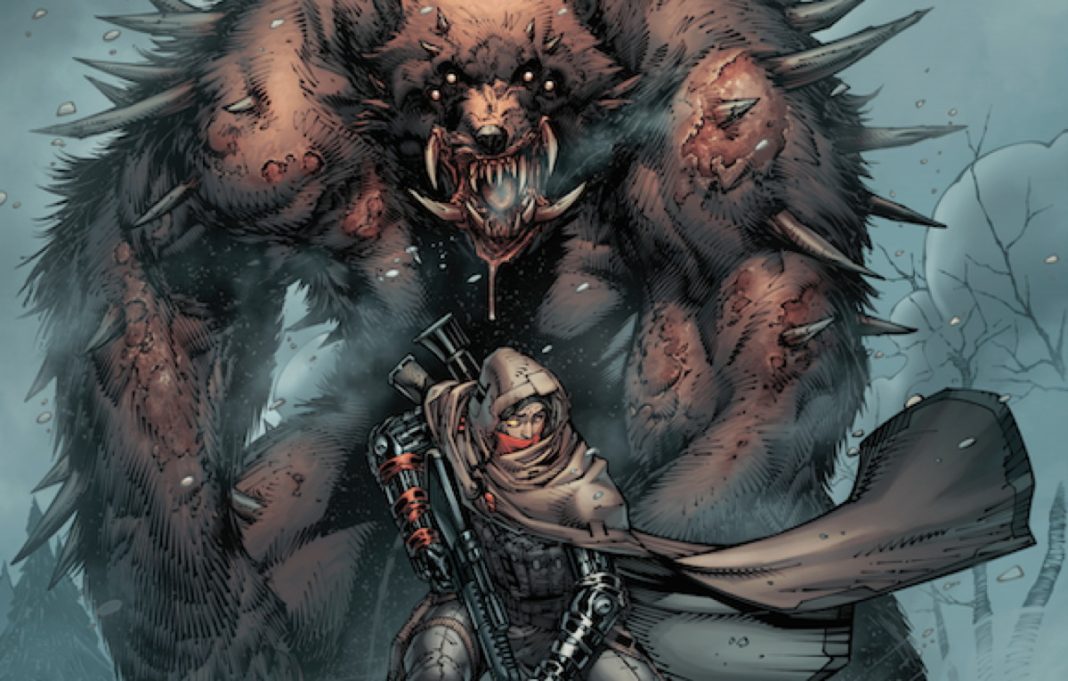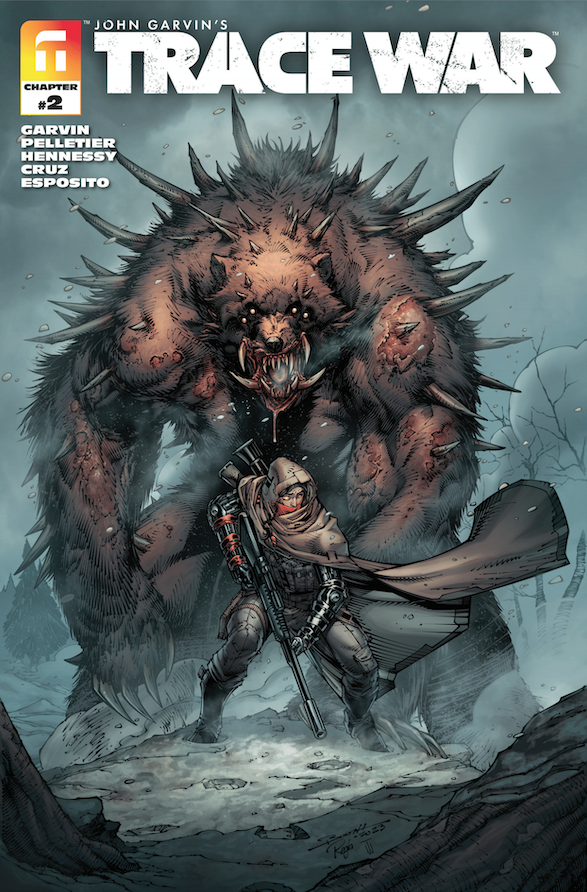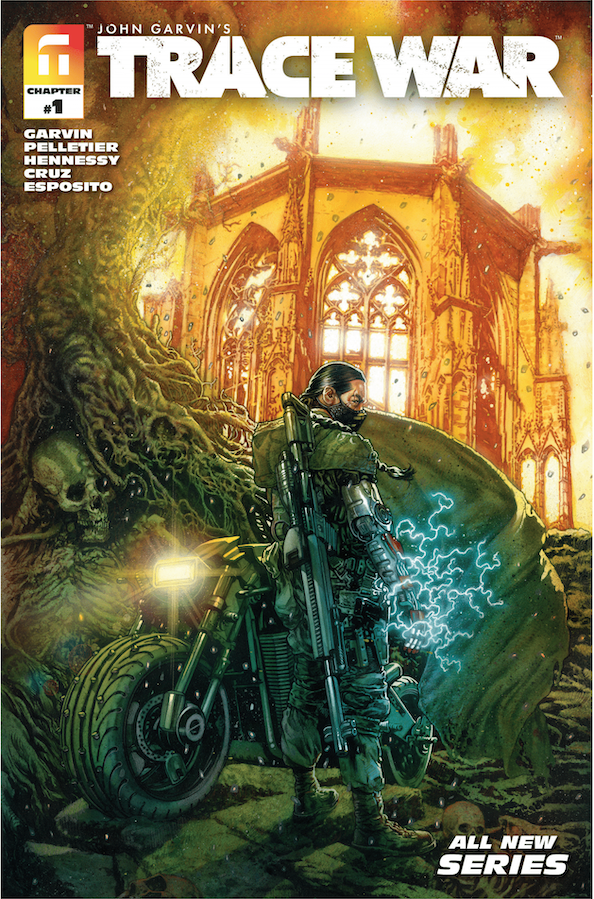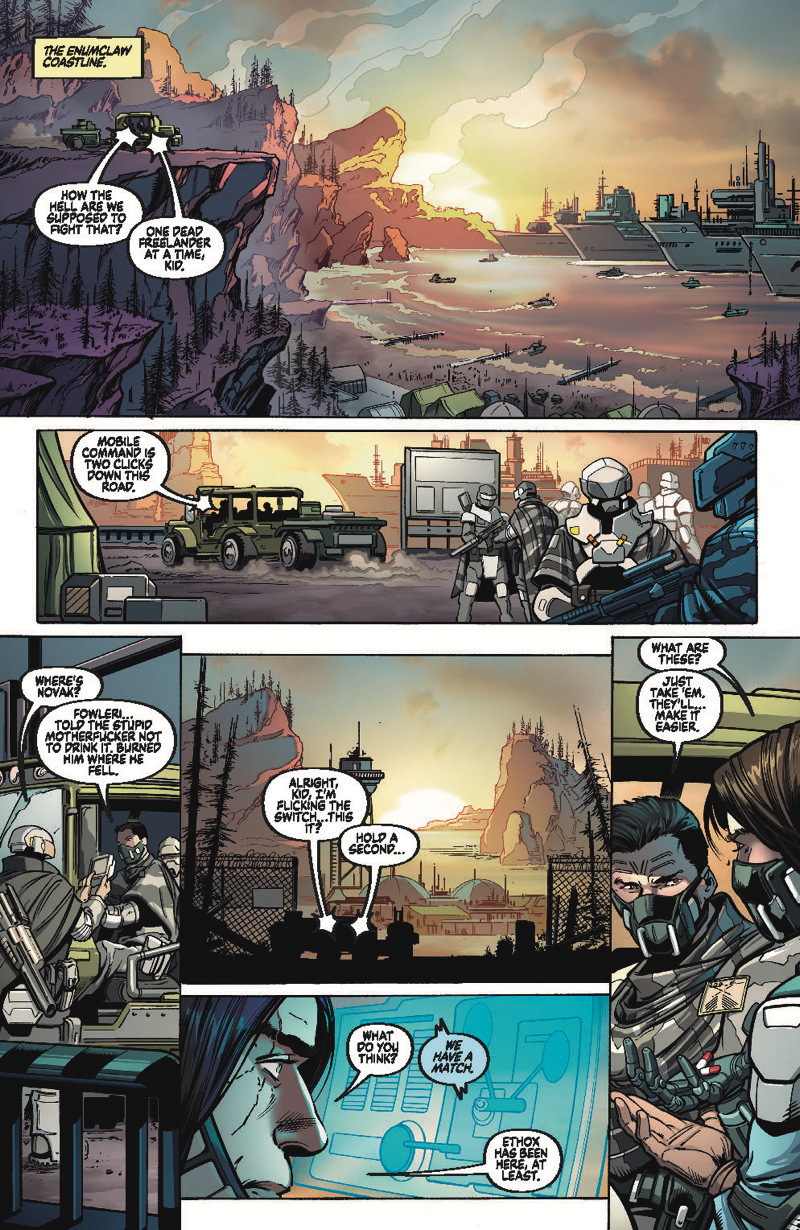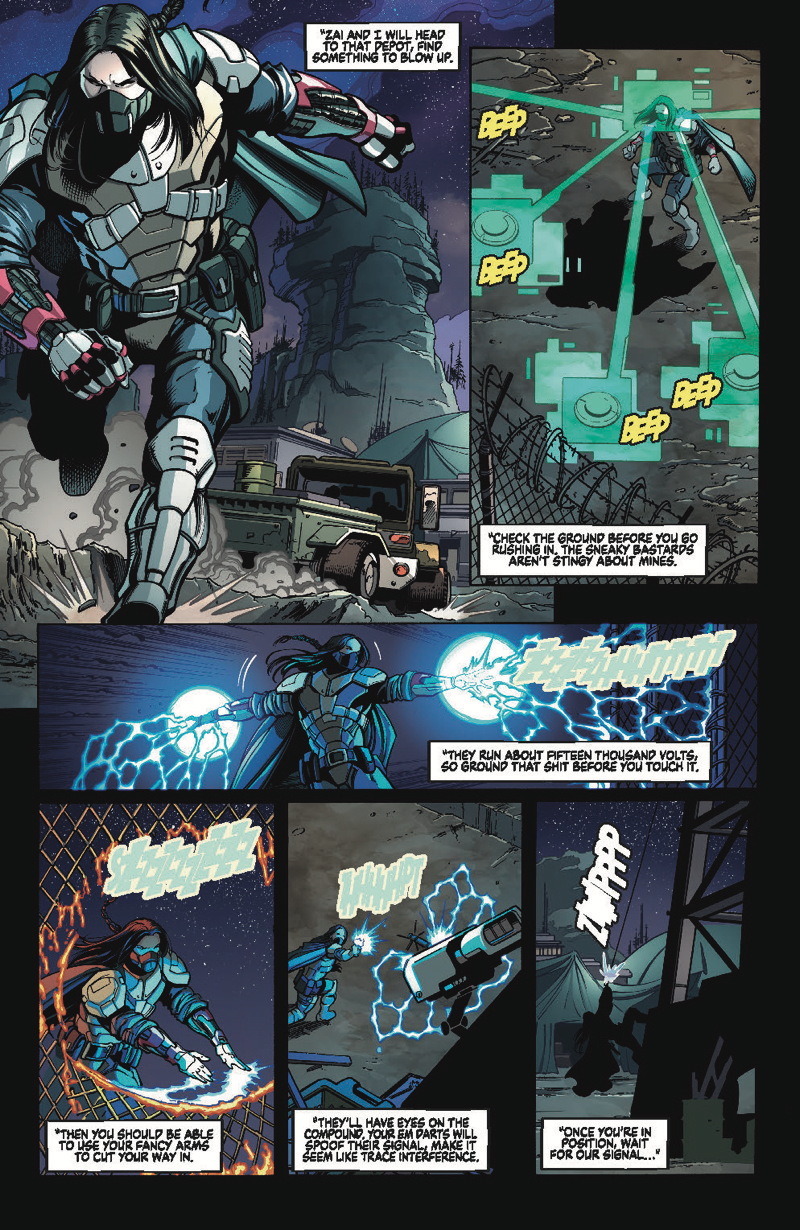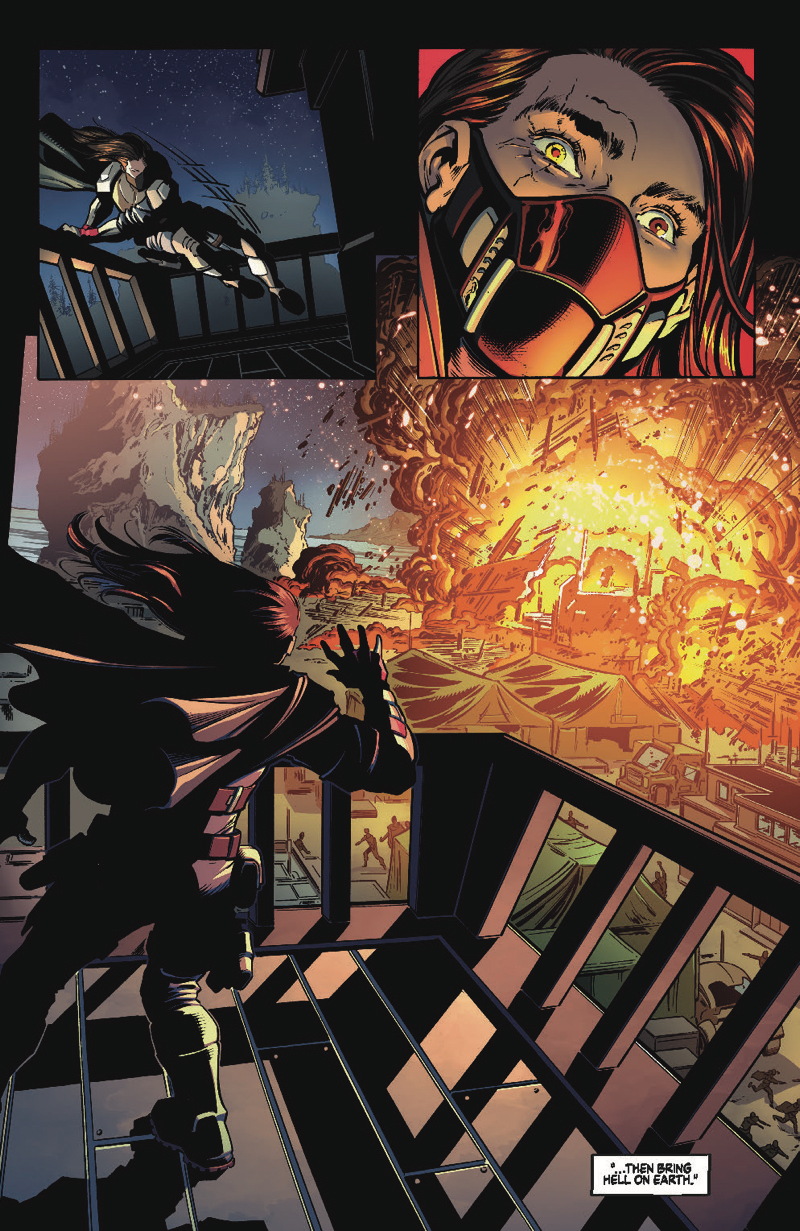John Garvin likes to tell stories, whatever the medium. The man who wrote and directed classic video games such as Days Gone, the Syphon Filter series, and Uncharted: Golden Abyss is getting into comics – although as you’ll read, not for the first time. Trace War (formerly known as Ashfall) is the lead project in what Garvin and his partners, Liithos Studios, hope will be a new AAA video game, set in a Pacific Northwest ravaged by the effects of climate change and mutations – and the fate of a man named Ash Naranjo who has been given special powers.
Trace War is planned as a three-issue mini series with artwork by Paul Pelletier (Aquaman, Guardians of the Galaxy, et al), Brett Booth (Backlash, Gunslinger), Tony Harris (Starman, Ex Machina), and more. As with Days Gone – which had a 12,000 script – Garvin is working to make the world of Trace War immersive and detailed. And making comics is the perfect way to approach that kind of storytelling, he told us.
It’s currently up on Kickstarter – but with only a few days to go, so don’t dally!
I got the chance to email Garvin some questions about moving from video games to comics, how comics fit into multi-platform storytelling, and whether climate change is real. As you’ll see, it takes a lot of thought to get into Garvin’s level of world building.
The Beat: John, you have an FAQ on your website that answers all the obvious questions. I had to dig around to come up with some good ones! But to state the obvious, you’ve been involved in the video game world for a while, which is a much more high-risk/high-reward field than comics. Trace War is being presented as a game, but the comic is also key to the property. So what were some of the elements in the transition from thinking about making a game to thinking about making comics?
John Garvin: Strangely, comics and games have always been a part of my life, equally compelling and important. As a teen in the mid-1970s I was a huge Jack Kirby fan, growing up reading Marvel mostly (and a lot of Carl Barks’s Uncle Scrooge), and I remember buying Kamandi #1 off the rack of our local drug store (note for today’s kids: Back in the day, comics used to be a quarter and were sold everywhere!) Around the same time, our family got one of the first home Pong consoles, and the quarter arcades blew up, and I saved all my money for one of the first home computers, the Atari 800, so I could play a space battle game called Star Wars (*cough* Star Raiders). By 1982 I had written three or four games in BASIC (an Ultima clone, a Napoleonic war game, and a Donkey Kong-style side scroller). Then the 1980s black-and-white independent comics revolution was ushered in by Eastman and Laird’s Teenage Mutant Ninja Turtles, and I spent five years writing and drawing comic books. I even placed fairly high in comic strip competition with my Peggy, a Peanuts style strip about a girl who plays video games so much it becomes her world. Then in 1990, I got a job as pixel jockey at Dynamix, working on graphic adventures like The Adventures of Willy Beamish, before going on to write and direct my own games like Bouncers for Sega CD, and MissionForce: CyberStorm.
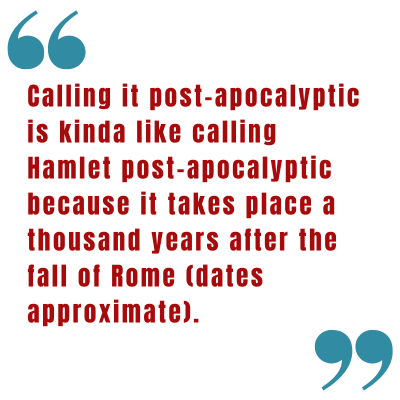
In terms of how I approach them creatively: largely the same. Starting with Syphon Filter I’ve made mostly character-based, narrative-driven action games, and my comics have also been narrative driven. So the two mediums, as I work in them, have much in common: action-oriented plots, strong characters, an imaginative setting, stark contrasts between good and evil, universal themes. The big difference is that in comics, I get to write and drive the action, while in games, almost all the action (it really should be ALL the action) is driven by the player during gameplay.
The biggest transition for me came in working on the open-world games Days Gone and Trace War. These required me to think a lot more about expansive world building, backstory, and character relationships. The final script for Days Gone was something like 12,000 pages (which I wrote by myself over four years), the cinematics alone were six hours, so that’s like three feature films. Big story. And for the Trace War comic, I’m bringing that same kind of expansiveness: a huge world, lots to discover and explore, grounded by a very personal story of a single young man: Ash Naranjo.
The Beat: I know you have a video game in development, and the comics being crowdfunded, but you also debuted some of this story on TikTok with some very well-known influencers. How did you approach that kind of storytelling and what did it bring to the project?
Garvin: The TikTok series was really (Liithos CEO) Mike Mumbauer’s baby. He’s way tuned in to all kinds of modern social media that I’m not. I wrote I think a paragraph of ideas for each episode, but the rest was a collaboration between Mumbauer and Michael Le, the star. The goal, really, was to have fun with a live-action version of Ash and introduce the IP to Le’s millions of followers. It was a huge success in that regard, with millions of views.
The Beat: We seem to be in a time of a lot of transitions, so how are you approaching the other transmedia elements of this? I feel like transmedia is as important as ever, but its meaning changes every few years.
Garvin: Not really sure what you mean by transmedia. If you mean, are we always thinking of ways to use our IP in different media? The answer is yes. From the beginning when Mike started Liithos we talked about Trace War being a comic and a game. I mentioned that I made a complete motion comic using Unity, I also made a fully playable Trace War combat card game. I’ve also started developing scripts for a Trace War television series and feature film. I’ve even got a partial plan for creating a series of novels. If the story is compelling enough, it will play on any platform you can think of.
The Beat: Trace War is set in a post-apocalyptic world where climate change and warfare have left the U.S. devastated and broken down into factions and different levels of technology. And to this world comes a hero … can you talk about Ash Naranjo and his journey, and what kind of character he is? How does a successful comics character become a successful VG character or vice-versa?
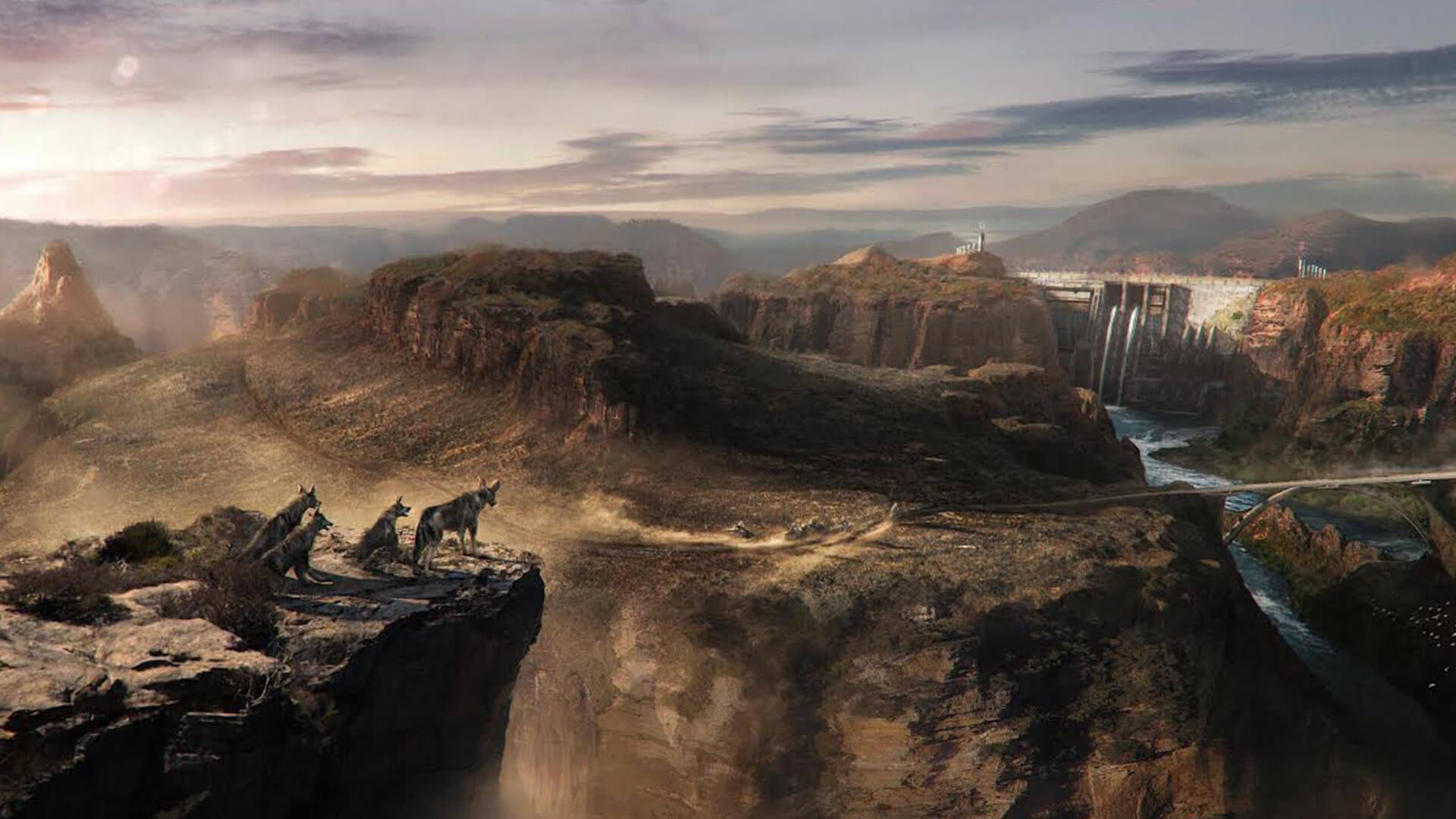
Garvin: As I mentioned earlier, I don’t think there’s any difference in writing a character for games or comics. And to set the record straight, I don’t consider Trace War to be post-apocalyptic, like Days Gone is. The difference is that Trace War is set a thousand years in the future, so we’re really talking about far-future science fiction. Calling it post-apocalyptic is kinda like calling Hamlet post-apocalyptic because it takes place a thousand years after the fall of Rome (dates approximate). So yes, the world has changed a LOT, because of climate change, global wars, the arrival of the Trace (mysterious pockets of dark energy that destroyed civilization globally). But to the people who live there, Ash and everyone he knows, this world isn’t “post” anything, it’s simply their reality.
Ash’s story is pretty simple: He’s born with severe deformities (a lot of children are because of the Trace), and most kids like this are considered defective and put to death. Ash’s parents fight to save his life, allowing the Order (an ancient organization trying to fight growing superstition and preserve science and knowledge) to give him implants. The implants help him do more than survive; they help him become “superhuman” (DC or Marvel haven’t trademarked that word yet, have they?), at the cost of making him an outcast as religious leaders consider him less than human and his peers call him a freak. When Ash’s home is destroyed, he’s thrust into the Trace War, an ongoing conflict between Freelanders who want to enslave the entire Puget Sound region, and the United Enclaves.
In many ways, Trace War is a superhero story, and these first six issues are Ash’s origin story.
The Beat: You’ve said this is something of a thematic successor to Days Gone, and that you were influenced by your love of science fiction for this, and there is obviously a lot of world building here. What were some of the storytelling aspects that you wanted to be part of this world?
Garvin: I’ve covered some of these so let me talk about theme. In all my writing I try to stick to “real world” themes, events, looking for realistic cause and effect. Aside from the Trace itself (which is a huge sci-fi element), everything in Trace War is extrapolated from today’s headlines, things that I find incredibly alarming. (I’m going to wax political here…)
- Climate change is real, people, and human beings are contributing to it. Man, this summer of 2023 is already filled with so many climate headlines, heat waves, massive fires, turbulent un-flyable skies, hurricanes. I imagine that in a thousand years, the entire world is going to be changed in ways that aren’t great for human beings.
- Warring ideologies. Left and right, red and blue, lib and conservative. These artificial divisions, fostered by those in power for political gain, are going to destroy us as a nation. We won’t see a single massive civil war, but thousands of small civil wars, until no one is left standing.
- Ignorance. I’m so alarmed to see the rise of vaccine denial, flat earthers, climate change deniers, Q supporters, book banners. It’s all nonsense, yet vast swaths of otherwise intelligent human beings believe this crap. I’ve always been a fan of Carl Sagan and his wonderful quote about where he sees all this going: “I have a foreboding of an America in my children’s or grandchildren’s time … when, clutching our crystals and nervously consulting our horoscopes, our critical faculties in decline, unable to distinguish between what feels good and what’s true, we slide, almost without noticing, back into superstition and darkness…”
So, in important ways, I like to use my fictional worlds to explore the consequences of things happening in my real world.
The Beat: Can you talk a little about the creative team, from Paul Pelletier to David Hedgecock?
Garvin: As a creator, I write a full script that describes everything on the page in as much detail as I can. And because I started with material for the open-world game, I had a ton of concepts, paintings, drawings, and documents. That said, Pelletier has to take that script and turn into exciting visuals that flow on the page, creating the settings, characters, props, and creatures, and I gotta say, I’m blown away by his work. He always has the freedom to add panels or rearrange visuals if it makes the story stronger, and I really appreciate what he brings. The other guys are also just top-notch professionals and add so much to the work: Andrew Hennessy on inks, David Garcia Cruz’s colors, Taylor Esposito on letters, just great work. I haven’t interacted with Hedgecock much: He sent me great story notes on a couple of issues that are much better because of his input, but the story was already solidified and in production when he came on board. He’s got so much great story experience that I’m looking forward to working with him more in the future.
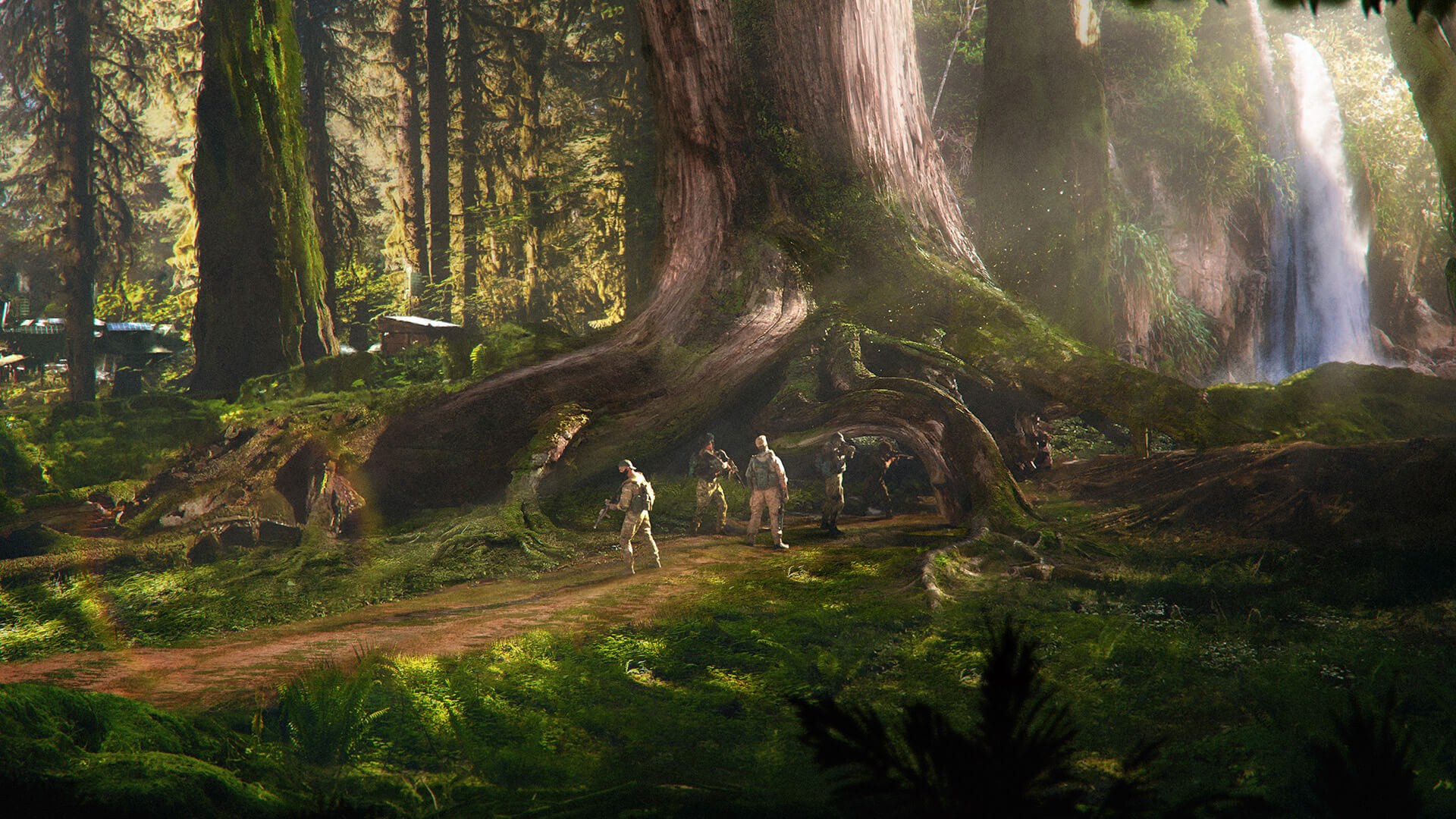
The Beat: Finally why did you turn to Kickstarter for this project?
Garvin: For the same reason we’re looking at telling this story in all sorts of different media: because it gives us a new way to interact with our audience. What I love about Kickstarter is that readers and gamers can interact with us, telling us what THEY want out of the IP, allowing them to be part of it from the beginning. One thing Mumbauer and I discussed from the beginning is that we didn’t want to do this the way the game industry has been doing it: For decades now, major publishers have been pretty tight-lipped about what they’re working on, doling out bits of information here and there in snippets. At Liithos we want more transparency and participation, we want our gamers and readers to come along with us on this journey as we create Trace War. Kickstarter is an important part of that process.
Trace War is currently in it’s last 48 hours on Kickstarter!
A few more pages of art , provided exclusively to The Beat!


